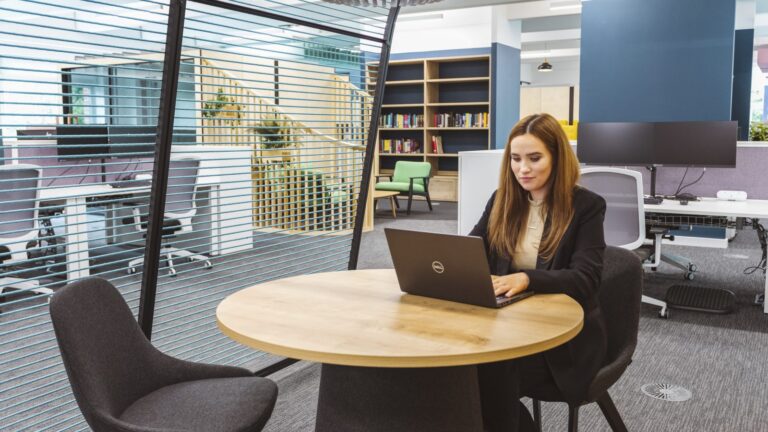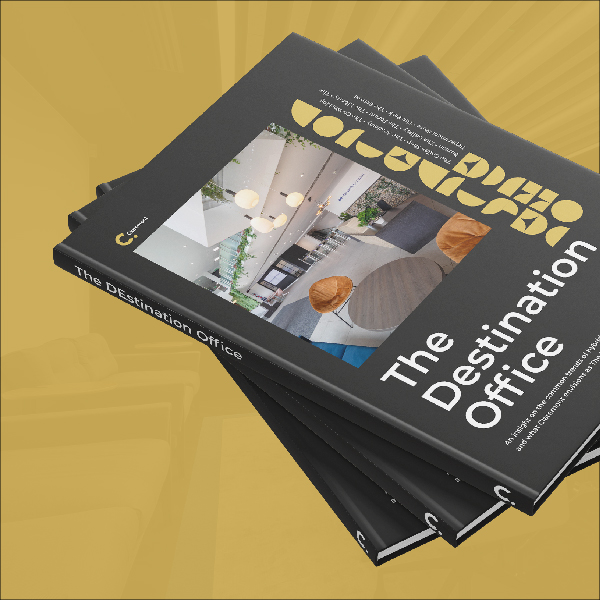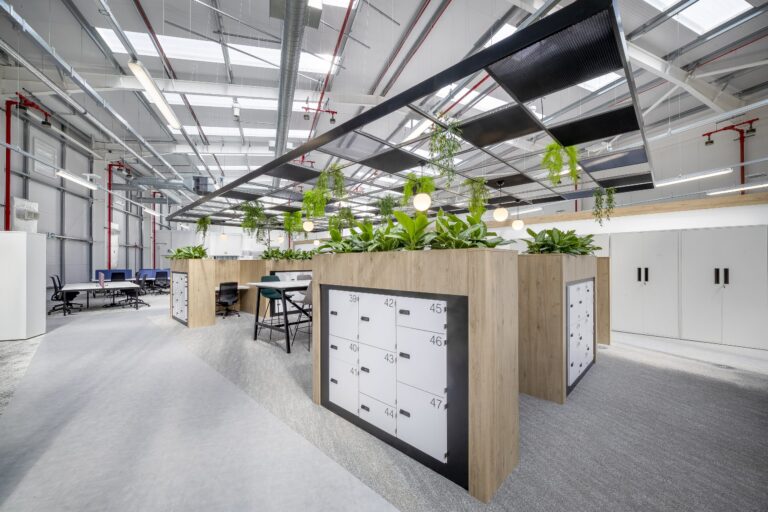
The Four-Day Week Pilot & Office Interior Design.
Date
30 June 2022
Read length
4 min
Seventy UK companies and more than 3,000 employees are taking part in a six-month project to trial the four-day working week. It’s attracting a lot of attention as business leaders, economists, media, and employees speculate about the pros and cons of a reduced working week and what it means in practice. But how will the four-day week impact the office, both from an interior design and a real-estate point of view? This blog investigates.
What is the four-day week pilot?
In essence, the four-day week is a business improvement strategy that aims to improve productivity and wellbeing as well as staff engagement, talent attraction and retention, workplace equality and organisational sustainability. Its ambitions are huge, and they rest on the premise of giving 100% pay in return for 80% of the time (reducing the typical 40-hour week to 32 hours) and 100% of the productivity.
At the very heart of this pilot is the idea that work culture should no longer be measured by office presence. Instead it should favour an output-based model where the focus is on getting the work done. It’s not a new concept and other European countries have already made the transition to a shorter working week. Germany, the Netherlands, Denmark, France, and Norway have all embraced it.
Context and our predictions
Unsurprisingly, the four-day working week is a lot more than just working less. It requires a considered business strategy, programme of change, commitment to wellbeing and continual overview of productivity to be effective. While on one hand it feels difficult to imagine a permanent move to the four-day week, but it’s not that long ago that agile working seemed equally unthinkable for many organisations. However with support and a more future-focused mindset, the transition was both possible and successful. Agile working is now the norm, so perhaps the four-day week will be too?
The early indicators suggest that the trial is proving positive – with lots of headlines like this – but we should also recognise there is an element of selection bias at play. The mere fact these organisations are taking part in the pilot suggests they are likely to have pioneering, forward-looking and people-orientated cultures. In other words, they are already the most likely to find this model effective. Without the input of more sceptical, dare we say less-progressive, businesses to give more balance– it seems unlikely the pilot will spark a mass transition to a shorter week.
How could the four-day week shape office interior design?
For those switching to a four-day week, a 20% reduction in running costs and associated carbon emissions (both from the office itself and employees commuting) could well be on the cards. There’s even the possibility of sub-letting space or allowing it to be used beyond ‘work’ such as hosting community events or supporting start-ups.
As time spent in the office will become more sacred for four-day week organisations – as it will be crucial to maximise productivity and bring people together – office design will need to be revisited. In office interior design terms spaces for both dynamic and passive collaboration as well as quiet focussed work will be required – all enabled by efficient and seamless technology to avoid unnecessary downtime. Quite simply, the office will have to become the destination office (a space rich in choice with the facilities, experiences and opportunities that people can’t get working remotely) for this is what allows future-focused and people-centric businesses to thrive.
Four-day week thinking could also change when the office is used. Four-day week businesses can’t suddenly take themselves out of circulation on the fifth day as customers expect continuity and accessibility, not to mention that businesses work with other businesses. This will almost certainly require more of a shift mentality among employees, which could in turn, prompt a move to smaller offices that are in almost continual use.
The pandemic proved that people could be just as productive, if not more so, by working away from the office. However, rather than adopting a hybrid working approach, many organisations are still mandating a full-time return to the office. This suggests that even with the enforced agile experiment of the last two years, not all organisations are ready or willing to embrace widespread operational change. Plus, there are some businesses that it simply doesn’t work for at all – such as those which are contact-centre heavy.
The only real certainty in this changing pictures is that the pandemic has made us revisit the relationship between how, when and where we work. It can seem overwhelming for business leaders as they grapple with more agile behaviours, changing employee expectations and the operational and organisational needs of hybrid working – not to mention the idea of a four-day week.
For us, the outcome of the trial is almost immaterial. Every business is different and there is no one size fits all. Whether you’re for or against the four-day week – the real opportunity lies in understanding how work is done in your organisation, recognising what your people need to thrive and ensuring a workplace and culture that champions the employee experience.
See how we could help with your new office interior design or office design and build project here
Get in touch
We love nothing better than talking all things workplace and design – got a question, potential project or just need some guidance?
Drop us a note…




